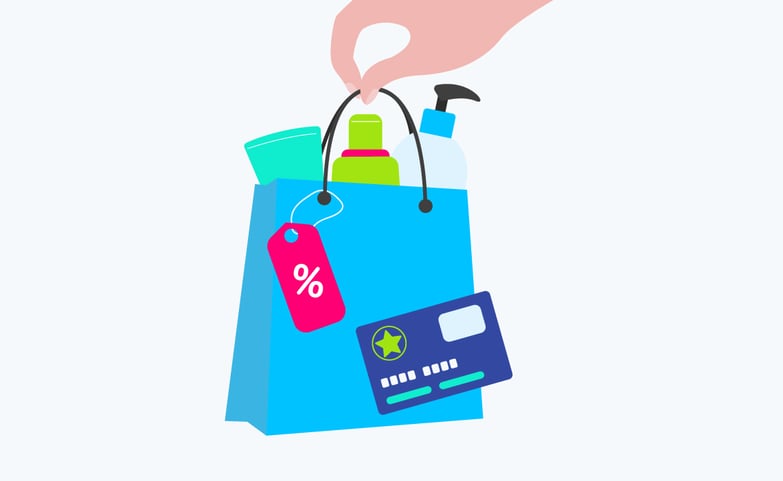The Importance of a Vibrant Product Page
The product page is where consumers land after a Google search or clicking on an ad or a link on social media. In a typical customer journey map or marketing funnel, consumers who visit your product page are usually in the final leg of their purchase journey or decision-making stage. This makes the product page your most valuable conversion tool. As Marketing Land’s Andrew Waber puts it, “Product pages are the new packaging.”
The question now is what kind of welcome did you prepare consumers for after their long journey? Have you done enough to persuade them to perform your desired task (e.g. contact, purchase, subscribe, renew, etc.)?
If your marketing and sales goal is to eventually convert visitors into customers and then turn existing ones into advocates, what types of information should your product page have?
Elements of a high-converting product page
Although a universal template for product pages doesn’t exist, you could get an idea from e-marketer as to what elements resonate well with consumers. According to their findings, images, descriptions/specs and reviews are the top three elements consumers are looking for in a product page:
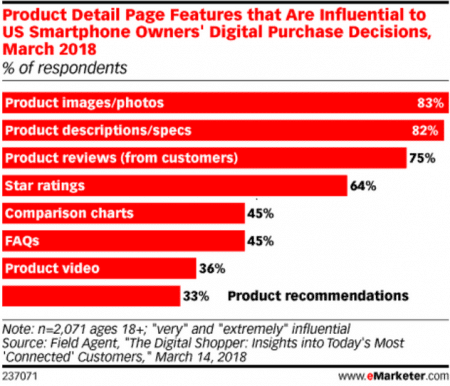
Let’s look at product page elements in detail:
Images/photos
The socialmediatoday compilation “14 Visual Content Marketing Statistics to Know for 2019” reveals that out of all visual materials, marketers use original graphics (37%) and stock photography (40%) the most:
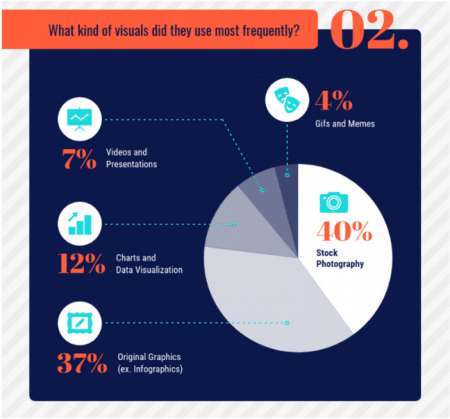
The same study shows that original graphics (40%) draw the most engagement:
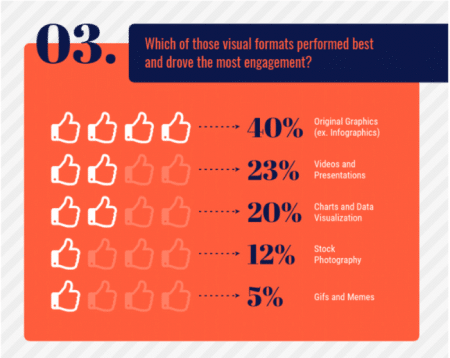
It’s clear that consumers prefer custom and well-thought-out images over stock photography. Content Marketing Institute’s Buddy Scalera advices, “Don’t use stock images on your branded website. Stock photos are cheap and easy, hence tempting. Do not be tempted by cheap and easy.” This is especially true for product pages that are expected to feature original products. In order to make your images work harder for you, follow these best practices:
- Present products from a variety of angles. Recreate the experience of picking up a product in-store and twirling it around for inspection. If you’re selling shoes, for example, remember that your consumers rely on your presentation to help them get a feel for a product. If possible, get a shot of all angles (or five to eight images as per a 2019 Marketing Land survey) and give consumers the feeling of not leaving any stone unturned. Observe how Lacoste did it:
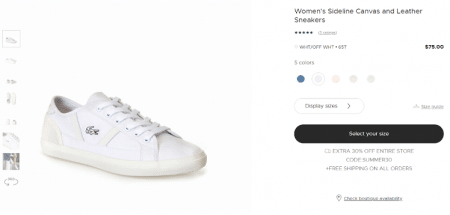
⦁ Provide a sense of scale. Help consumers gauge the size of the product by displaying it against another or placing it in actual situations. This is especially important if you’re in the furniture business. A first-time bed shopper, for example, might not know the difference between queen and king size beds without illustrations. In terms of giving a sense of scale, take a page out of Casper’s mattress size comparison guide:
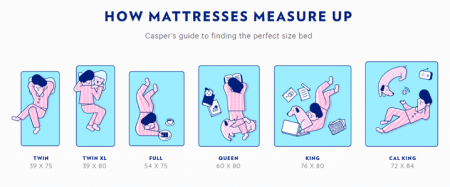
⦁ Transmit scent and taste. Activate the consumers’ memory of what something smells and tastes like using creativity with color psychology (although a digital scent player is in existence). Help consumers smell and taste your product just by using their eyes. In Colors that Influence Food Sales, the color white connotes clean, while green denotes healthy and brown signifies natural. This Campina goat cheese page used all three of those colors to successfully communicate what their goat cheese is all about, which is probably why it’s nominated on awwwards.
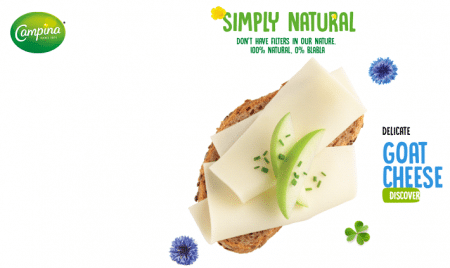
⦁ Capture texture. Convey more information about your product using texture. Show consumers what it’s like to touch and feel your product using zoom and 360-degree view. In this Amazon bath towel page, the image zooms into the details of the product as users mouse over it – effectively communicating its degree of softness.

As an added value, you can also support your product page with videos. Consumers simply love watching videos and they demand brands to produce more.
- 54% of customers want more videos from brands they support
- 72% of consumers would rather watch a video to learn about a product or service
- 74% of consumers who watched an explainer video subsequently bought the product
Vat19 is an example of a brand that relies heavily on video on their product pages to sell. Their goal is to have consumers experience the product on the page – and it’s working!


Descriptions/specs
With 85% of consumers conducting online research before making a purchase, ensure that they get what they’re looking for – and more – once they land on your product page. What are they looking for? Consumers are looking for accurate information. According to Neustar’s research “What Erodes Trust in Digital Brands”, the top reason why consumers distrust a website is an inaccuracy.
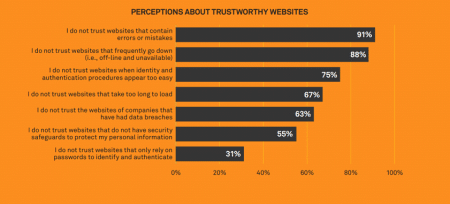
Consumers are also looking for complete information. According to Episerver’s “Why 92% of shoppers abandon online purchases”, 98% of shoppers don’t transact on a purchase because of incomplete and incorrect content.
Beyond the standard title, description, specs, price and call to action requirement, what should your product page have to get consumers to buy?
According to Meaningful Brands® 2019 study, 77% of brands could disappear today and consumers wouldn't care. On the flipside, brands (such as Google, Johnson & Johnson, Microsoft, etc.) who convey meaning and are perceived as making the world a better place:
- Outperform the stock market by 134%
- Multiply their share of wallet by nine
- Experience greater returns on KPIs
This means that consumers are expecting brands to deliver content with personal and collective benefits. How does this translate into the product page’s description/spec section? Let’s take a look at how Method does it on their page:
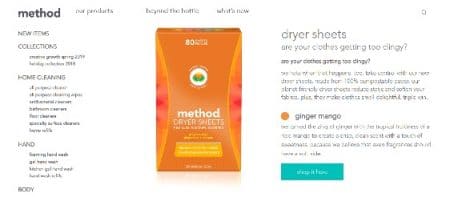
The product name “Dryer Sheets” immediately conveys the benefit. Followed by “Are your clothes getting too clingy?”, the copy goes directly to the consumers’ exact pain point. “We hate when that happens, too” is a statement of empathy. Then it goes on to provide the solution to the problem, inform consumers that they’re eco-friendly and then make a play to the imagination by writing, “We tamed the zing of ginger…”
If you scroll down, you’ll find that they also provide the ingredients and what those chemicals do.
For transparency, they also provided information where consumers could go or who to contact should they have more questions – effectively conveying accountability.
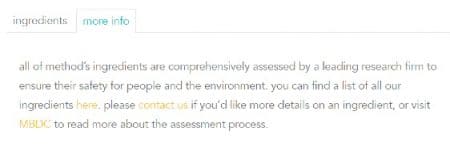
Product reviews (from customers)
According to the white paper “The Growing Power of Reviews", 97% of consumers read product reviews with 85% looking out for negative reviews before making a purchase. Today’s consumers are brand-wary preferring to hear from fellow consumers as to their experience with a product or service.
Depending on your branding and strategy, you can make the review section of your product page fun just like Old Spice:
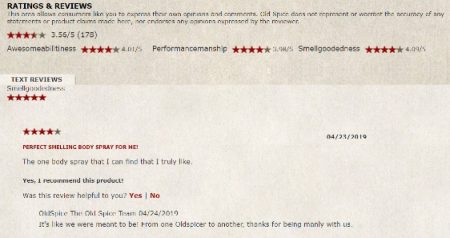
The brand didn’t need to entice customers with gimmicks and contests to make them leave ratings and comments. It’s the creative and branding concept that carried the page. Not only did Old Spice make it easier for customers to give ratings by using stars (with numeric equivalent), they also made customers feel good by using amusing made-up terms such as “Awesomabilities” and “Smellgoodedness”. On top of that, they actively responded to comments with comical lines such as, “It’s like we were meant to be! From one Oldspicer to another, thanks for being manly with us.”
Where to start in creating a solid product page?
It all starts with managing your product data. Putting all the above-mentioned elements together on a page is no small feat especially if you are dealing with volumes of product data and teams scattered across the globe working with disparate systems. If the number one pet peeve of consumers on product pages is an inaccuracy, address it by leveraging the right technology, such as a Product Information Management (PIM) solution, to consolidate all your product content, giving people access to it anytime, anywhere. It’s only then that you can start cleaning, enriching, and sharing product information that is accurate, complete, consistent and relevant across all channels.




